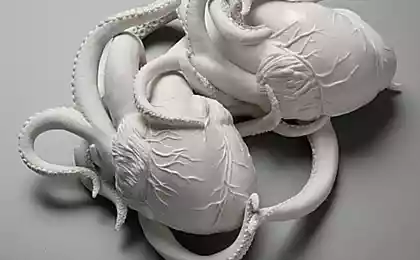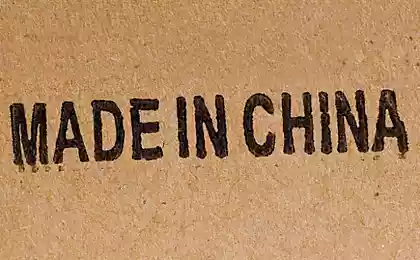420
How to create the most subtle pezogeneratora in the world
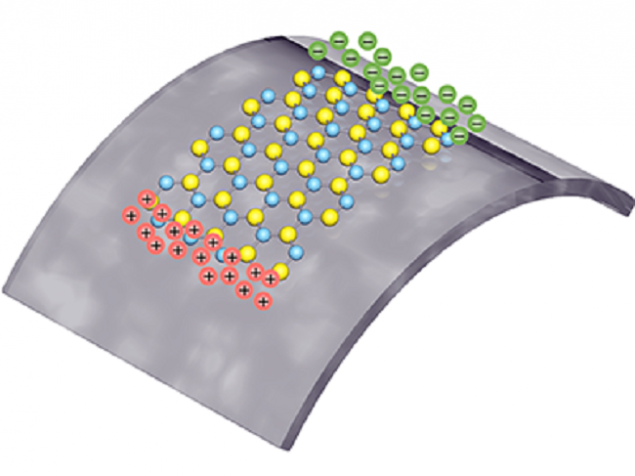
If it's safe to mark important to open this year, opening in 2015, that's exactly what it is. About a month ago researchers from Columbia Engineering and Georgia Institute of Technology reported the first experimental observation of piezoelectric and piezotronic effects in an atomically thin material, molybdenum disulfide (MoS2). The result may be a unique electric generator mechanoacoustical device to be optically transparent, very light, flexible and stretchable.
In an article published in the journal Nature, a research group from the two institutions demonstrated the mechanical generation of electricity in a two-dimensional material (2D) of MoS2. Piezoelectric effect in this material had previously been purely theoretical.
Piezoelectricity is a well-known effect, which is stretchable or compressible material generates an electric voltage (or Vice versa, when the applied voltage causes it to expand or contract). However, for materials with a thickness of a few atoms, the effect of piezoelectricity has not yet been observed experimentally. The latest work with molybdenum disulfide potential opens the way for new types of mechanically controlled electronic devices.
"This material — just a single atomic layer can be turned into a wearable device, integrated into clothing, to convert energy of your body's movements into electricity to feed wearable sensors or medical devices; perhaps this energy is even enough to charge your phone right in your pocket," says James hone, Professor of mechanical engineering and co-author of the work.
"Confirmation piezoelectric and piezotronic effects adds new functionality like two-dimensional materials, says Zhong Lin Out, also the co-author of the study. — Materials scientists are in awe of molybdenum disulfide, and the demonstration of the piezoelectric effect for example, it gives a new appearance to the material."
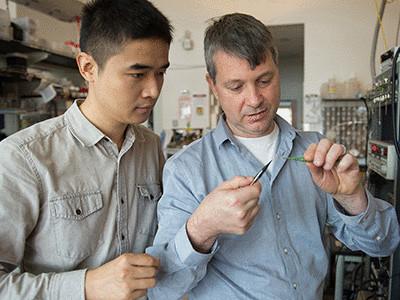
Hone and his research group demonstrated in 2008 that graphene, a two dimensional form of carbon, is the most durable material. Along with the Wang Lin they also actively studying the new properties of 2D materials like MoS2 and Gardena, or rather, how they stretch and compress.
Zhong Lin Vaughn and his research group were pioneers in the field of piezoelectric nanogenerators that convert mechanical energy into electricity. Along with a postdoctoral fellow, Wenguo Wu piezotronics they are also developing devices, which use piezoelectric charges to control the flow of the current flowing through the material — just as it happens in conventional trehsetovyh transistors.
There are two ways of using molybdenum disulfide for generating current: using an odd layers and bending it in the right direction. The material is extremely polar, but, as noted by Zhong Lin Won an even number of layers cancels the piezoelectric effect. The crystal structure of the material is also piezoelectric in only certain location of the crystals.
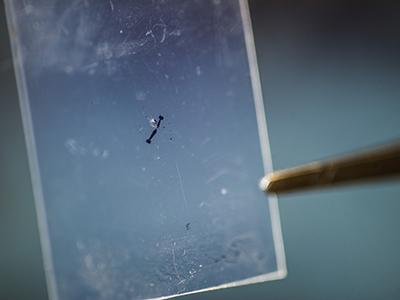
To work in Nature a team of Hon placed thin flakes of MoS2 on flexible plastic substrates and determined how their oriented crystal lattice by optical methods. Then applied on the flakes of metal electrodes. In a study done at the University of Georgia, Won the group installed measurement electrodes on samples provided by Hone's group, then measured current when mechanically deformed samples. They monitored the conversion of mechanical energy into electrical energy, and also measured the voltage and current output.
"From what we found curious was the fact that the material is MoS2, which is not piezoelectric in bulk form, becomes such when losing weight to a monatomic layer".
To become piezoelectric, a material must break Central symmetry. In bulk MoS2, successive layers are oriented in opposite directions to generate positive and negative voltages that cancel each other out, thereby giving a zero piezoelectric effect.
In fact, MoS2 is just one of a group of two-dimensional semiconducting materials known as transition metal dichalcogenides, all of which are forecast to have similar piezoelectric properties. They, in turn, are part of a larger family of two-dimensional materials from which the piezoelectric materials still remain undiscovered. It is important to note that, as shown by hone and his colleagues, two-dimensional materials can be stretched much more when compared with conventional materials. Traditional ceramic piezoelectric materials are pretty fragile.
Research may open doors to development of new applications of such materials and study their unique properties.
"This is the first experimental work in this area, which shows an elegant example of how the world changes when the size of material shrinks to the scale of a single atom, adds the hon. — What we learned, we are ready to build useful devices for all kinds of applications".
Ultimately, as noted by Zhong Lin Out, the research could lead to the creation of a full nanosystems one atom thick, which will be completely Autonomous to collect mechanical energy from the environment. This study also demonstrates for the first time piezotronics effect on the example of the two-dimensional material, which significantly expands the application of layered materials in all areas of modern electronics.
Source: hi-news.ru









